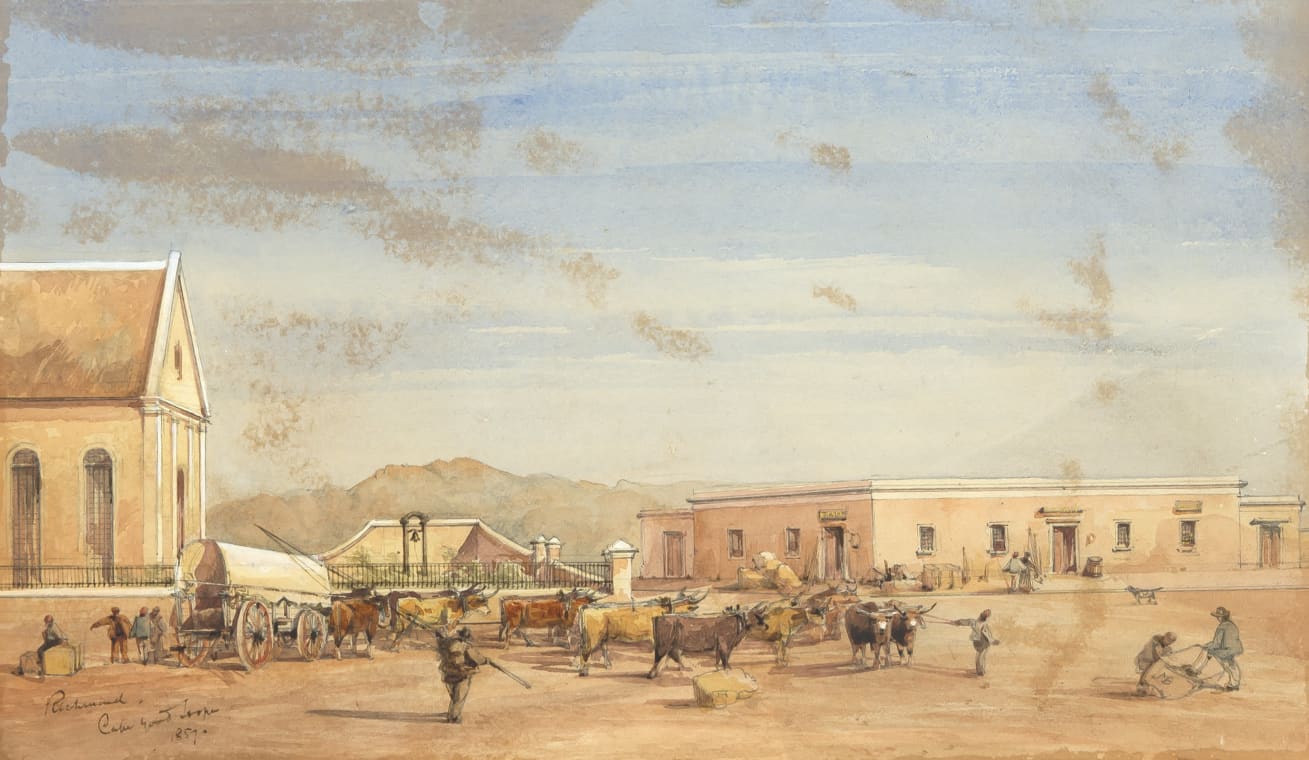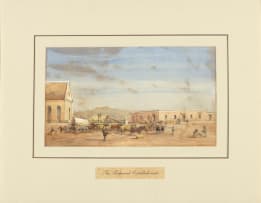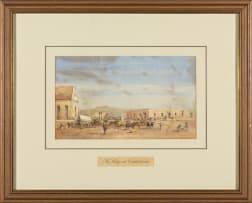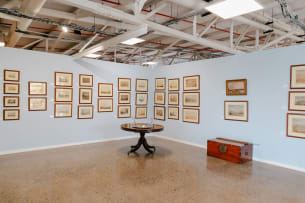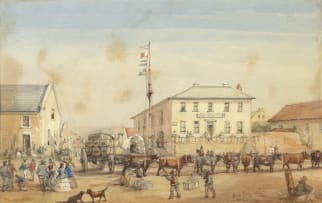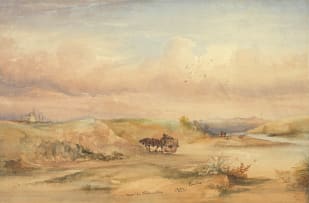October ART
Timed Online Auction, 27 September - 9 October 2024
Impression/Expression
About this Item
signed with the artist's initials, dated 1857 and inscribed with the title; inscribed 'The Richmond Establishment' on the mount
Notes
In the depiction of the Richmond Establishment, it is interesting to note the differing kinds of merchandise and equipment stacked against the wall of the shop. This scene is a depiction of a typical small Karoo town during the 19th Century.
Mosenthal collection
The present lot comes from The Mosenthal Establishments Commission, a Jewish family of businessmen who played a significant role in establishing South Africa's wool industry and launching various trading stores across the country's hinterland.
In late 1856, Julius Mosenthal decided to commemorate the Mosenthal Establishments and commissioned Bowler to create seven watercolours depicting its properties and business ventures.
These watercolours showcase the early development of streets and buildings in Cape Town and Port Elizabeth (now known as Gqeberha), as well as the bustling activity in the various Mosenthal-owned trading posts in outposts such as Graaff-Reinet, Murraysburg, and Hope Town.
"Before photography became widespread, artists like Thomas Bowler and contemporaries like Thomas Baines played the role of photojournalists. Their paintings, capturing landscapes and scenes encountered during global exploration, were widely reproduced as lithographs and featured in publications," says Wrigley.
While these works arguably reflect a Western colonial perspective, they remain valuable historical records offering insights into the lifestyles and customs of European settlers of the Cape during the Victorian era.
Literature
Frank R Bradlow et al (1967) Thomas Bowler: His Life and Work, Cape Town: A A Balkema, illustrated on page 138.
